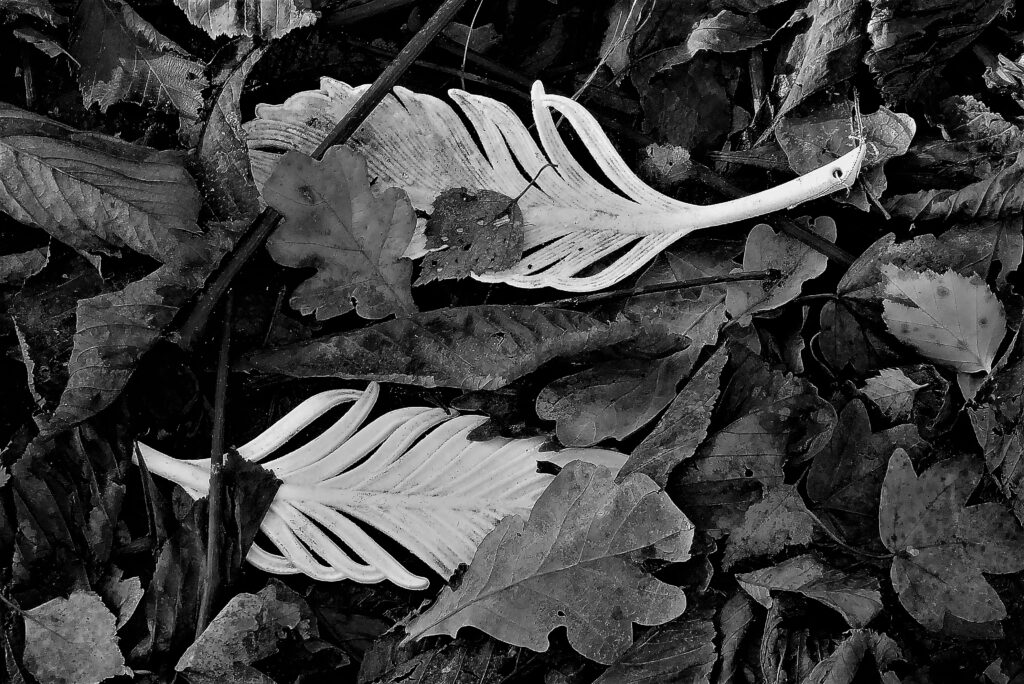
Sounding the Angel can now be accessed in full here. In a series of four blog posts, I introduce each of the four sections of the sound work. Today’s post discusses the first part of the work, ‘Autumn’. You can listen to this section here.
Today’s post introduces the first section of our sound piece, ‘Sounding the Angel’. The work has been divided into four sections, reflecting the project’s movement through the year from autumn 2023 through to summer 2024. For each of the seasons, you can hear samples from the field recordings that David made on site at that time of the year. In this section, you can hear passing traffic, recordings of the vibrations passing through The Angel, and samples from an autumn dawn chorus from the trees. ‘Autumn’ captures the participants’ previous associations with the site, and what The Angel means to them.
The two participants have very different relationships with The Angel of the North. Our first participant, who commemorated his wife by scattering some of her ashes at The Angel, described how the sculpture had threaded through their lives together. He describes his wife as ‘a Gateshead lass born and bred’, and speaks of her as an ardent defender of the sculpture when it was first proposed. The couple met and courted when they worked at a factory in the Team Valley – a site which now lies in the shadow of The Angel. After their marriage, he and his wife were both active in supporting the mineworkers during the strikes in the 1980s, he as a trade union organiser and she as a treasurer. At his wife’s funeral, the colliery band made a special recorded performance of her favourite tune, and her extensive collection of signature scarves was given away to people attending the funeral, with two of them then being tied to the top of local banner at the next Miners’ Gala Day procession.
Our second participant is South African, and she recalls vividly her first sight of The Angel, travelling north with her husband from Reading, where they were then living, to visit his family. Looking up from the road map, it seemed to her that The Angel filled the whole front screen of the car, and she describes the event as a ‘special moment’. Such was the impact of The Angel on her that our participant took her parents to see it when they visited from South Africa, and the sculpture had the same effect on them – especially her father, who was energised as he went up the hill towards it. It was on a separate occasion that the participant first registered the memorial site in the trees. Her friend was visiting and she spotted the memorials in the trees. When the participant’s brother died later that same year, she had no grave to visit and no places nearby that they had visited together. Her thoughts then returned to the memorial site. Her friend was later diagnosed with cancer, and The Angel became associated with her, too, because they had visited together. The memorial site helped the participant to feel connected to her friend and her brother after their deaths.
Even though the stories are very different in terms of the participants’ connection to The Angel, notable similarities emerged. For both participants, The Angel is comforting because it is constantly visible – on the news, on postcards, on stickers, and even on the inside pages of a passport. The second participant remarks that, even in South Africa, her parents see The Angel sometimes on TV or on a picture. The participants both also speak of their fondness for The Angel, which is associated with particular parts of the sculpture. The first participant remembers his wife always commenting on the shapeliness of The Angel’s bum and calves whenever she passed. The second participant speaks of the family nickname for The Angel – the ‘rusty bird’ – and of her love for The Angel’s wings.
The most striking resonance across the stories lies in the participants ‘ connection with the mining history of the site. I have already outlined the deep personal history that links the first participant, and his wife, to mineworking in the local area. Accounting for why her father was so energised by the site, the second participant explains that he used to work in the gold mines in South Africa. The sculpture was meaningful to him because it was built over a mine, and he spoke about the foundations of the sculpture extending deep underground. He observed to his daughter that ‘there must be people who died in the mines’, and that ‘The Angel is a memorial over them too’.
It is clear from our two conversations that The Angel has multiple layers of personal significance for both project participants, and that its associations also extend to the people memorialised. The iconic nature of The Angel means that there are constant reminders of the site in everyday life. The Angel’s presence as a memorial to mining and mineworkers is significant for both participants, both of whom have family connections to the mining industry.
